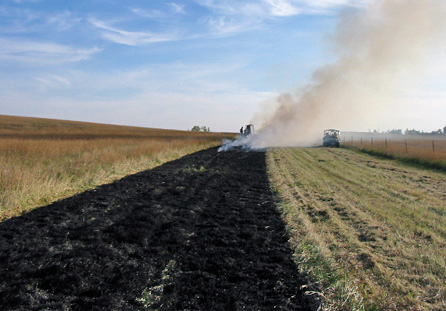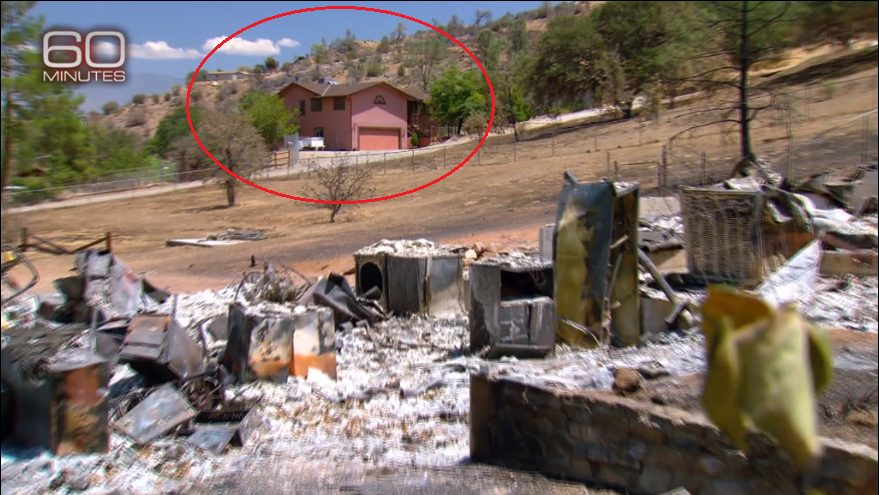Reporters Learn About Firebreaks In Covering The Fire Which "Breaks All The Rules"
Reporters on a podcast covering California's historically large and menacing Mendocino Complex fire -- which just claimed the life of a sixth firefighter -- were surprised to learn large firefighting teams actively start fires to create fire breaks in pursuing the ultimate goal of fire "containment."
Shovels and matches and bulldozers and chainsaws are fire fighting tools as is wind - insufficient wind makes their job harder and more lengthy. And like eskimos using many words for different types of snow, the professionals express different types of burning with articulation. (There is no direct link to the podcast episode, but here is the link to the podcast series called "The Bay", and this episode is from August 10 2018 titled "These Fires Break All The Rules" which they do.)
These employees - the firefighters, the public information officer, the crew leaders, sound deceptively upbeat in their demeanor. But when you examine the words they're saying, it's hard to conclude they won't approach exhaustion rotating in and out of their 24-hour shifts. "The days just start blending, you lose track" one alert-sounding firefighter is heard saying in the recording.
branch - "We're going to branch three of the fire, is that right?"
build - "They're hoping to use some of these containment lines that were actually built to keep the Pawnee fire from exploding. And to build on them."
strike team - "The strike team is five engines."
mixed strike team - A team comprised of engines who have never met until now.
corner - "The strike team's job for the day was to secure basically the southeast corner of the Ranch fire."
line
cut the line
button up
test fire
fire plan
carry
knob - "And then uh we'll probably do a test burn over there in the corner and see if we can get it to carry, and if we can, we're going to fire off this knob."
island
torch - "We don't want that tree to 'torch' and cross the line so we're going to take it down [chainsaw begins buzzing in background.]"
earth - "Because earth doesn't burn."
wind - "So you think having a wind or not having a wind is a good thing but it really isn't. I mean, in the moment it is, because the fire's not being pushed anywhere. But all that means when you don't have a wind, is that you're *going* to have a wind."
grass - earth doesn't burn, but dry grass does.
underbrush - earth doesn't burn, but underbrush does.
How this fire is different: "Back in my early years, at night was when we made our attack. But at night we've still got active fire behavior. We can't count on that anymore" fire crew leader Stevie Long told the reporter. "Now the drought .. the fires are burning a lot quicker a lot hotter a lot faster. So that is kind of the current challenge."
Reporter Sukey Lewis told the podcast host that rules that "were almost written in stone" such as "fires don't go downhill" have been scratched out by this, the largest wildfire in the state's history.
---------------------
Further Reading:
"11 Best Practices for Preventing Firefighter Cancer" published on national fire prevention association blog include tips like changing and washing all clothes of fire retardant contaminants as soon as possible. community.npfa.org

This work by AJ Fish is licensed under a Creative Commons Attribution-NonCommercial 4.0 International License.



